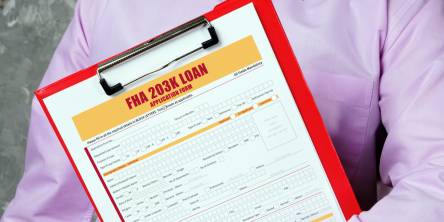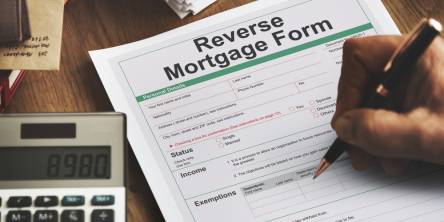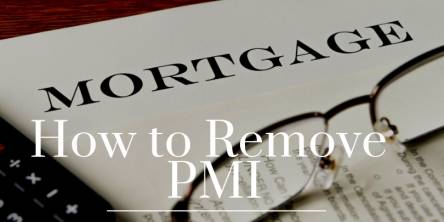The Comprehensive Journey to Getting Your Mortgage Pre-Approval

Mortgage pre-approval is an important process that should not be taken lightly when buying a home. By getting a pre-approval letter from your lender before you start looking for a home, you gain advantages like proving how serious you are as a buyer and making the purchase process easier.
In this guide, we will take you through the mortgage pre-approval journey, starting from when to apply for it up to completing application forms.
Detailed Guide to Mortgage Pre-Approval
A mortgage pre-approval is where a lender evaluates your financial situation and creditworthiness so they can determine how much money they would be willing to loan you for purchasing a home, which makes it different from being prequalified, which requires only providing self-reported information.
Read more: Ways You Can Use a Reverse Mortgage
Having a pre-approval letter is necessary in today’s competitive real estate market. As such, sellers are shown that qualified buyers are interested in their properties, thereby improving their chances of accepting their offers. Moreover, with a pre-approved amount, it is possible to focus on what homes fit within one’s budget, thereby saving time and energy.
Mortgage Pre-Approval Process Explained
The process to get a mortgage pre-approval involves several key steps. To begin with, check your credit score and make sure there are no mistakes or issues on your report. A higher credit score can improve your chances of being approved and securing better rates.
Next, collect all financial documents required, including tax returns, pay stubs, W2s, 1099s, bank statements and identification cards. This will enable lenders to analyze your finances and thereby determine whether or not you qualify for them.
Ensure that your debt-to-income ratio (DTI) meets lender requirements. This ratio is based on those obligations such as monthly debt payments compared with the income before tax and insurance taken into account and it’s among primary determinants for your ability to repay a mortgage.
Research and choose a lender that offers competitive rates and terms that suit your needs[5][6][8]. Consider factors such as the lender's reputation, customer service, and any special programs they may offer for your specific situation.
After you have identified a lender, make sure you complete the mortgage application and submit all necessary documents. Be ready for a credit check where there will be a hard inquiry on your credit report. It is a normal procedure in pre-approval where lenders evaluate your creditworthiness.
How to Qualify for Mortgage Pre-Approval
There are various aspects that lenders consider while granting mortgage pre-approval. One of these is the borrower’s credit score. A high credit score indicates financial responsibility, hence increasing the chances of getting approved on favorable terms.
Income verification is another important component. Such documents include paystubs, tax returns, and employment verification. The purpose of this requirement is to ascertain if you have enough income that can be relied upon to meet monthly mortgage payments over time.
Providing evidence of the financial reserves that lending institutions require is another step in asset verification.amples of these include banks statements as well as investment accounts or retirement accounts. Having sufficient assets makes one application for home loan strong since it shows how ready an individual can handle unforeseen charges.
Finally, the ratio of your debt-to–income (DTI), is vital during pre-approval. A lower DTI ratio will increase the chances of a successful pre-approval while also showing that you can afford to pay the mortgage comfortably on a monthly basis.
Documents Needed for Mortgage Pre-Approval
To make the pre-approved process go smoothly, it is important to have all required documents ready. Below is an extensive list of what you might need:
- Personal Identification: these may include driver’s license or passport and social security cards.
- Income Verification: W-2 forms, tax returns, pay stubs and proof of other income such as bonuses, commissions or rental income.
- Asset Statements: Bank statements for savings accounts, retirement investment accounts to show your financial reserves.
- Debt Information: Card statements for credit cards, student loans, auto loans, and any other outstanding debts.
- Employment Verification: Contact information about your current employer, including name of the company, location, and telephone number, together with that of previous employers.
Having these documents easily accessible and organized provides lenders with evidence that you are prepared for the pre approval process.
Mortgage Pre-Approval Tips for First-Time Buyers
The mortgage pre-approval process can be intimidating if you are a first-time homebuyer. The following are useful ideas which will help prepare you and raise your chances of success:
- Repair Your Credit Rating: Pay down debts, stay away from new credit inquiries, and check whether there are any errors in your credit report. A person with a good credit rating has greater chances of getting a loan from banks at better interest rates.
- Save Money for Down Payment: Set up savings account to reach down payment cost level together with closing costs saved in case it is necessary.
- Stay Employed: Lenders want people who can demonstrate a consistent work history and income. If you recently changed jobs or have sporadic salary, then be prepared to provide further documentation as support for your application.
- Refrain from Buying Expensive Items: Before and during the pre-approval process, avoid any huge purchases or new loans. There are significant changes in your financial situation that can make you ineligible for a mortgage, thus causing you to redo the pre-approval process.
Start Your Journey
Mortgage pre-approval is an important stage of buying a home. To navigate the preapproval process with confidence and increase your likelihood of success, understand how it works, gather all necessary documents, and follow the tips given in this guide.
Remember, getting pre-approved does not guarantee final loan approval, but it is an important milestone in your journey toward homeownership that proves you are ready for such a step. It also gives you an insight into what budget should be planned, making your offer stronger. With knowledge about how to go through the mortgage pre-approval process while searching for homes confidently, your homeownership dreams can be closer than ever.
Similar Articles
The mortgage industry has evolved significantly since the inception of digital lending platforms. Conventionally, obtaining a mortgage was quite complicated, involving many in-person visits, massive paperwork, and an extensive approval process.
In 2022, a staggering $427 billion was invested by homeowners in home improvements and repairs. For seniors navigating the challenging realm of renovations to improve their living spaces, the prospect can be both thrilling and intimidating
What Massachusetts Home Buyers Should Know About FHA 203(k) Loans If you're looking for a fixer-upper or looking to renovate your current property in Massachusetts, an FHA 203(k) rehab loan may be worth considering. This unique loan program offered by the Federal Housing Administration (FHA) allows borrowers to finance a home's purchase and rehabilitation costs.
Land loans and construction loans are two different financing options when it comes to building your own home. Land loans are ideal if you don't plan to build right away, while loans for construction are suitable for starting building immediately. There are various types of land loans, each with different requirements and interest rates.
As retirement looms, many seniors face financial challenges that demand creative solutions. In recent years, reverse mortgages have emerged as an increasingly popular option for older homeowners seeking to leverage the equity in their homes to improve their financial situation.
A land loan is used to purchase a plot of land. You may want to buy land to build your dream home or start a business. If you are looking at getting a land loan, a lot will depend on what you plan to use the land for.
The prevalent mess in economies due to corona skips no part of the economy and affects the core of stability. Of course, real estate cannot be an exception and have to confront the alterations that the notorious COVID-19 applies to.
If you purchased the house with less than a 20% down payment, the lender probably required you to buy private mortgage insurance. This also is true for any refinancing loans with less than 20% equity. Private mortgage insurance protects the lavender from the elevated risk presented by a borrower with a small down payment.
Buying a home is probably one of the largest, most significant purchases of your life, so when you need to get a mortgage, you want to make sure you're getting the best lender and the best deals. How do you do it? These four tips and advice will help you choose a great lender and get the best deals.









